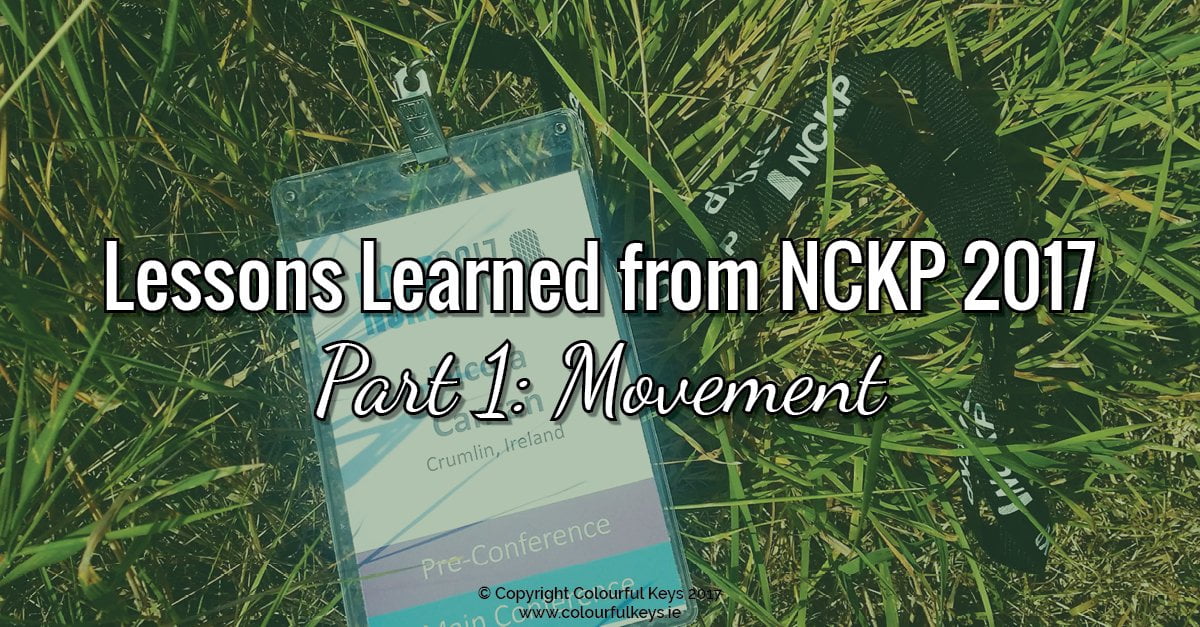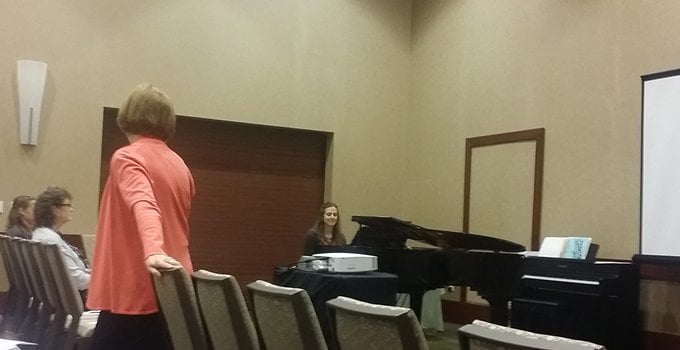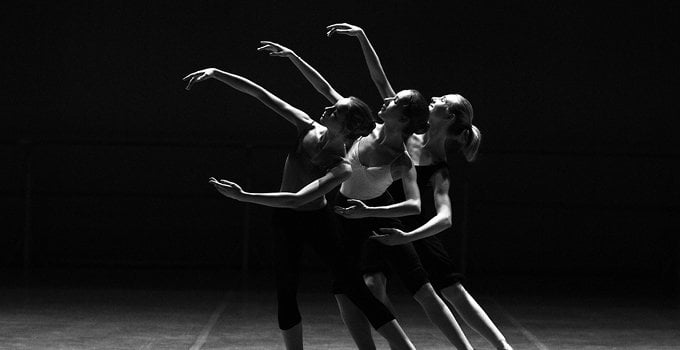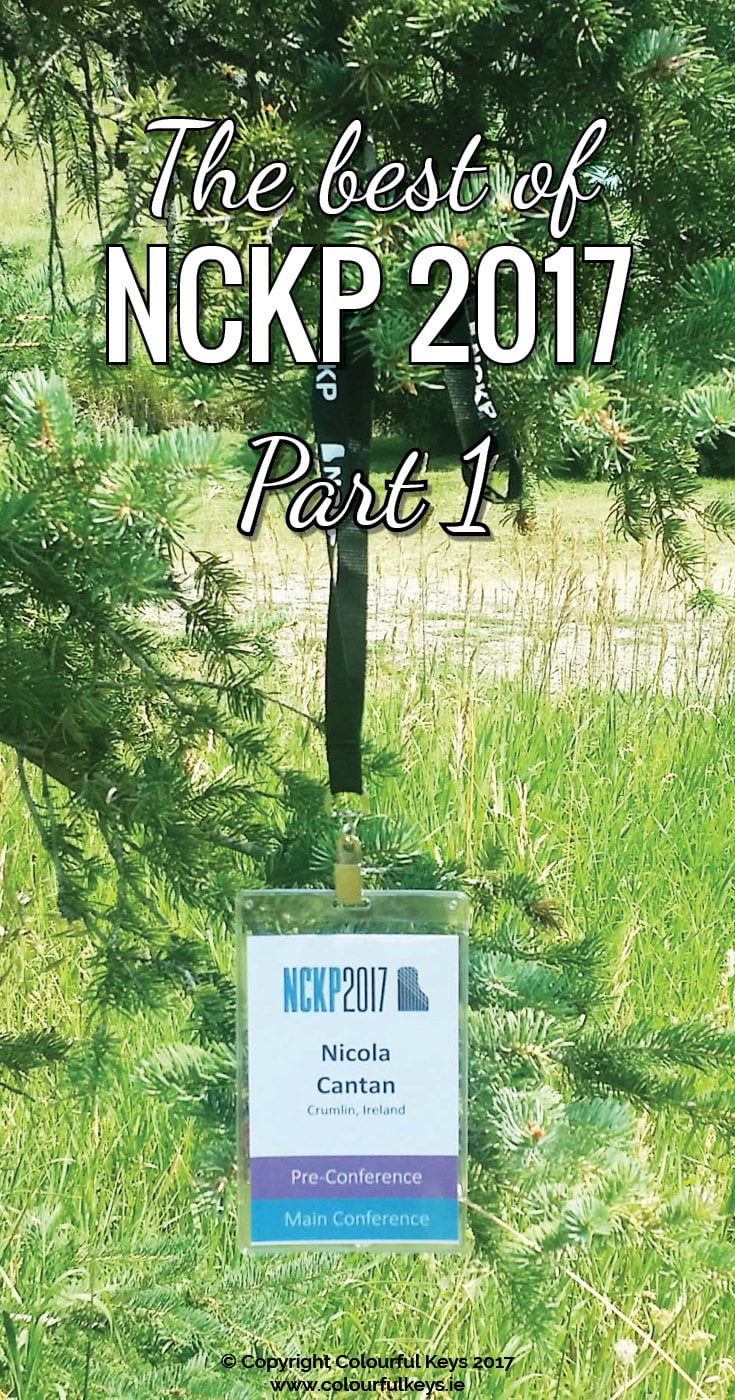Getting over the pond to go to NCKP is something that has been on my list for a while now – and it didn’t disappoint. In case you weren’t lucky enough to make it yourself, I want to share some of my inspiration with you.

This is the first in a series of five posts where I’ll be highlighting the overarching themes that stood out to me across the various sessions – and today we’re looking at movement…
Not technique but big gross motor movement activities that I saw throughout the conference.
Rhythm
The most obvious place to find some movement at NCKP was Marilyn Lowe’s session on Saturday morning. (Her books are called Music Moves for Piano after all.)

Sure enough, in Marilyn’s workshop we were all up on our feet, feeling the big beats in our heels, subdivisions in one hand, and smaller subdivisions still in the other. I had witnessed a little of Dr. Gordon inspired teaching before, so this didn’t surprise me.
What did strike me, was quite how much repetition she did of this to explain the beat relationships. We did crotchets in our heels, quavers in one hand, and semiquavers in the other. Then this turned into minims, crotchets and quavers; followed by semibreves, minims and crotchets.
Get the idea?
This emphasis on the relative nature of note values was really interesting to me. It’s tempting to try and make things simple for our students by explaining semibreves as 4 beat notes, but – as Marilyn said – counting is not rhythm. I could really see how repeating this exercise would allow students to get under the skin of our rhythm system in the early stages of study.
Dynamics
I loved all the teaching demonstrations at the conference. In Courtney Crappell’s session, he had his student up and down off the bench to bring her dynamics to life.
They practiced the dynamics in order first, starting crouching down low for pianissimo, and gradually rising up to represent each dynamic. Then Courtney took the music off the stand and they pointed to each dynamic in turn and matched it with their bodies.
I do similar exercises to this myself, but what I particularly enjoyed about this part of Courtney’s lesson was that he specifically instructed her to repeat this process at home before practicing each day.
I think little touches of fun and creativity like this are what make all the difference to our students’ practice efficiency and enjoyment. And Courtney’s student was beaming throughout her lesson – so it’s clearly working.
Expression
On Friday evening I went to Catherine Rollin’s showcase of her ‘Museum Masterpieces’ series.
Apart from her beautiful demonstrations, and the unique nature of her books (each piece is inspired by a different famous painting), Catherine also added an extra touch of sparkle to her session.
She got everyone up to dance.
Yes, a room full of piano teachers danced in a Sarabande style, swaying side to side while Catherine played. Not only was it great to get out our seats at the end of the day – but it showed Catherine’s imaginative style as a teacher.

She obviously takes as much joy in teaching as composing, and her studio sounds like a very vibrant place to be. All sorts of pieces make so much more sense if you dance them first.
This is one of those little changes that I’ll be integrating into my teaching when I return in September that’s sure to bring more smiles into my lessons.
Get up and MOVE!
The biggest lesson I learned from these movement activities at NCKP, was quite how much they boosted my own concentration.
I know getting up off the bench is something I talk about a lot here, but I think it bears reiteration: I, as a not particularly antsy adult, found my concentration significantly improved after these short escapades.
I think that says a great deal about how much even our best behaved students can benefit from getting up and moving during their lessons.

I ‘ve already been doing this, especially to demonstrate the difference between 3/4 and 4/4. We sway from sideto side across the room, or twirl, or march. Kids feel a little awkward at first, nd it’s surprising how awkward their rhythm can be when they begin. But as we sing and move to a new piece things usually settle in much better.
I found that after I began playing for ballet classes my whole concept of rhythm changed and I began to see it as a much more physical event. Now I rarely have my students count, but after introducing physical movement for a new piece we invent words to use with the rhythm, such “huckleberry” for 16th notes 4 syllables, or create complete phrases. Of course they still have to understand rhymic values, but developing the feeling of the rhythm requires something altogether different. Besides that it’s a lot more fun to create silly phrases than to count to 4.
I agree! Thanks for your thoughts Cheryl, you’ve got some lucky students – sounds like a super fun place to learn!